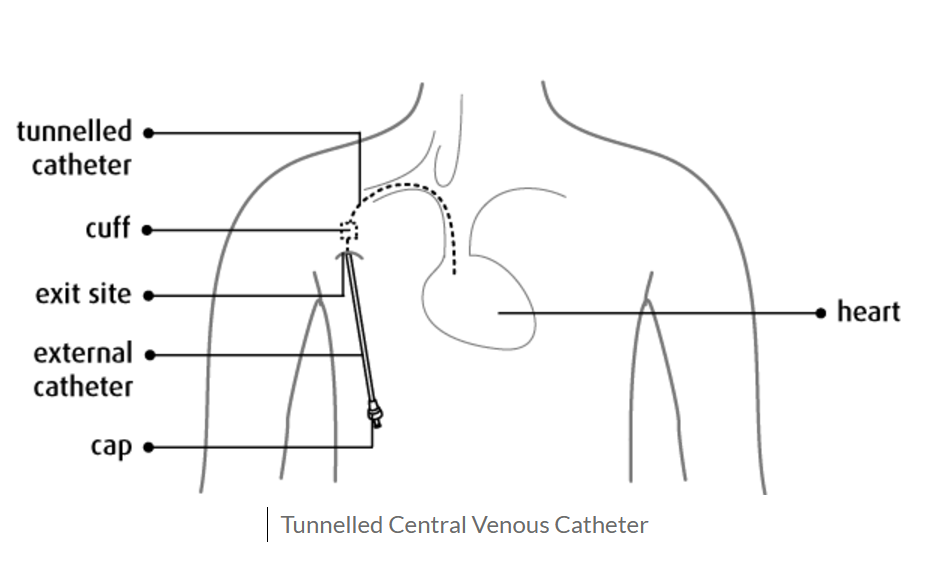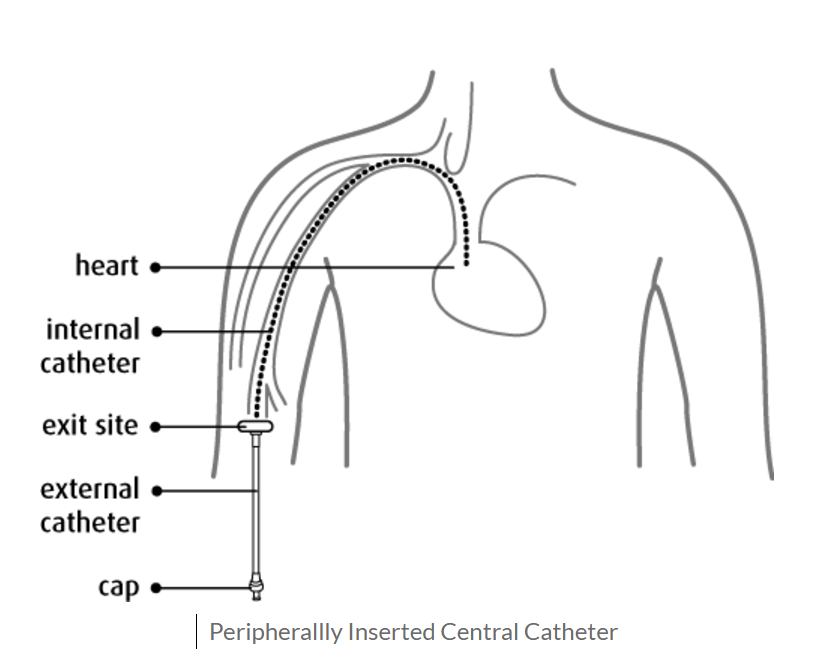A Central Venous Catheter (CVC), also known as a central venous line, is a flexible tube inserted into a large vein that leads to the heart. This medical device plays a crucial role in administering medications, fluids, and nutrients directly into the bloodstream, as well as for monitoring various health parameters. Central venous catheters are vital for managing patients with severe illnesses, those undergoing complex treatments, or individuals who need long-term intravenous therapies. In this article, we will explore the purpose of central venous catheters, the different types, the procedure involved in their insertion, and the potential complications.
Purpose of Central Venous Catheters
Central venous catheters are used for a variety of medical reasons, including:
Administration of Medications: Certain medications, such as chemotherapy drugs or antibiotics, may be too harsh for peripheral veins. A CVC allows for the safe delivery of these medications directly into a larger vein, reducing the risk of vein irritation.
Long-term IV Therapy: Patients who require prolonged intravenous (IV) therapy, including antibiotics, pain management, or nutrition (like total parenteral nutrition), benefit from a central venous line, which provides stable and reliable access.
Fluid and Blood Product Administration: In emergency or intensive care situations, a CVC enables the rapid administration of fluids, blood products, or plasma, which can be lifesaving in critical conditions.
Blood Sampling and Monitoring: Central venous catheters facilitate frequent blood sampling without repeated needle sticks. They are also useful for monitoring central venous pressure, providing insights into a patient's cardiovascular status.
Dialysis or Apheresis: In patients with kidney failure or those needing apheresis, a special type of CVC can be used to access the bloodstream for dialysis treatments.
Types of Central Venous Catheters
There are several types of central venous catheters, each designed for specific purposes and durations:
PICC Line (Peripherally Inserted Central Catheter):
A PICC line is a long, thin catheter inserted through a vein in the arm, usually the basilic or cephalic vein, and threaded to a central vein near the heart. It is commonly used for medium to long-term treatments, ranging from weeks to months.
PICC lines are relatively easy to place and remove, making them a preferred choice for prolonged therapies that don’t require surgical insertion.
These are directly inserted into a large vein in the neck (internal jugular), chest (subclavian), or groin (femoral) and are typically used for short-term purposes, usually in critical care or emergency situations.
Non-tunneled CVCs are not ideal for long-term use due to a higher risk of infection and are usually removed once the patient’s condition stabilizes.
Tunneled Catheters:
Tunneled catheters are inserted into a central vein but are routed through a subcutaneous tunnel before reaching the entry point on the skin. The tunnel helps reduce the risk of infection, making them suitable for long-term use, such as in patients requiring frequent blood draws or ongoing chemotherapy.
These catheters often have a cuff that encourages tissue growth, securing the catheter in place.

Implanted Ports (Port-a-Cath):
An implanted port is a small, round device placed under the skin, usually in the chest. A catheter runs from the port to a central vein. Ports are used for long-term intermittent treatments like chemotherapy, as they are entirely under the skin and have a low risk of infection.
Patients prefer ports for long-term care because they are less obtrusive and only require a needle stick during each use.

Central Venous Catheter Procedure
The insertion of a central venous catheter is a medical procedure that varies depending on the type of catheter being placed. Here is a general overview of the process:
1. Preparation:
Before the procedure, the patient's medical history is reviewed, and consent is obtained. An antiseptic solution is applied to the insertion site to reduce the risk of infection.
Local anesthetic or sedation may be administered to ensure the patient's comfort.
2. Catheter Placement:
Using ultrasound guidance or anatomical landmarks, the physician inserts the catheter into a suitable vein. In the case of a PICC line, the catheter is inserted through a peripheral vein in the arm. For other types, central access points like the subclavian or internal jugular veins are used.
The catheter is advanced until it reaches the desired location, usually the superior vena cava near the heart. An X-ray or fluoroscopy is often performed to verify the catheter's position.
3. Securing the Catheter:
Once the catheter is properly placed, it is secured with sutures, adhesive, or a special dressing. Tunneled catheters may have a cuff to further secure the device.
The insertion site is then dressed, and the catheter is flushed with saline to ensure it is functioning correctly.
4. Aftercare:
Proper care and regular dressing changes are crucial to prevent infection. Patients and caregivers are trained on how to care for the catheter at home if needed.
Potential Complications
While central venous catheters are invaluable tools in medical care, they are not without risks. Some potential complications include:
1. Infection:
The most common complication is infection at the insertion site or bloodstream infection (central line-associated bloodstream infection, or CLABSI). Strict sterile techniques during insertion and careful maintenance can minimize this risk.
2. Blood Clots:
CVCs can sometimes cause blood clots in the vein. Blood thinners may be prescribed to reduce this risk.
3. Pneumothorax:
Accidental puncture of the lung can occur during insertion, particularly with non-tunneled catheters placed in the chest area. This results in a collapsed lung, which requires prompt medical intervention.
4. Catheter Malfunction:
The catheter may become blocked, kinked, or dislodged, affecting its function. Regular flushing and proper handling can prevent these issues.
5. Bleeding:
There is a risk of bleeding during the procedure, especially if the patient has clotting disorders. Proper technique and post-procedure care help to mitigate this risk.
Conclusion
Central venous catheters are crucial devices in modern medical care, offering reliable venous access for a variety of therapeutic and diagnostic purposes. While the procedure to insert a central venous line is relatively straightforward, it requires expertise and careful handling to minimize complications. Understanding the types of CVCs and their specific uses allows healthcare providers to choose the best option for each patient’s needs, ensuring effective and safe care.
More articles you may interested
Post time: Nov-25-2024









